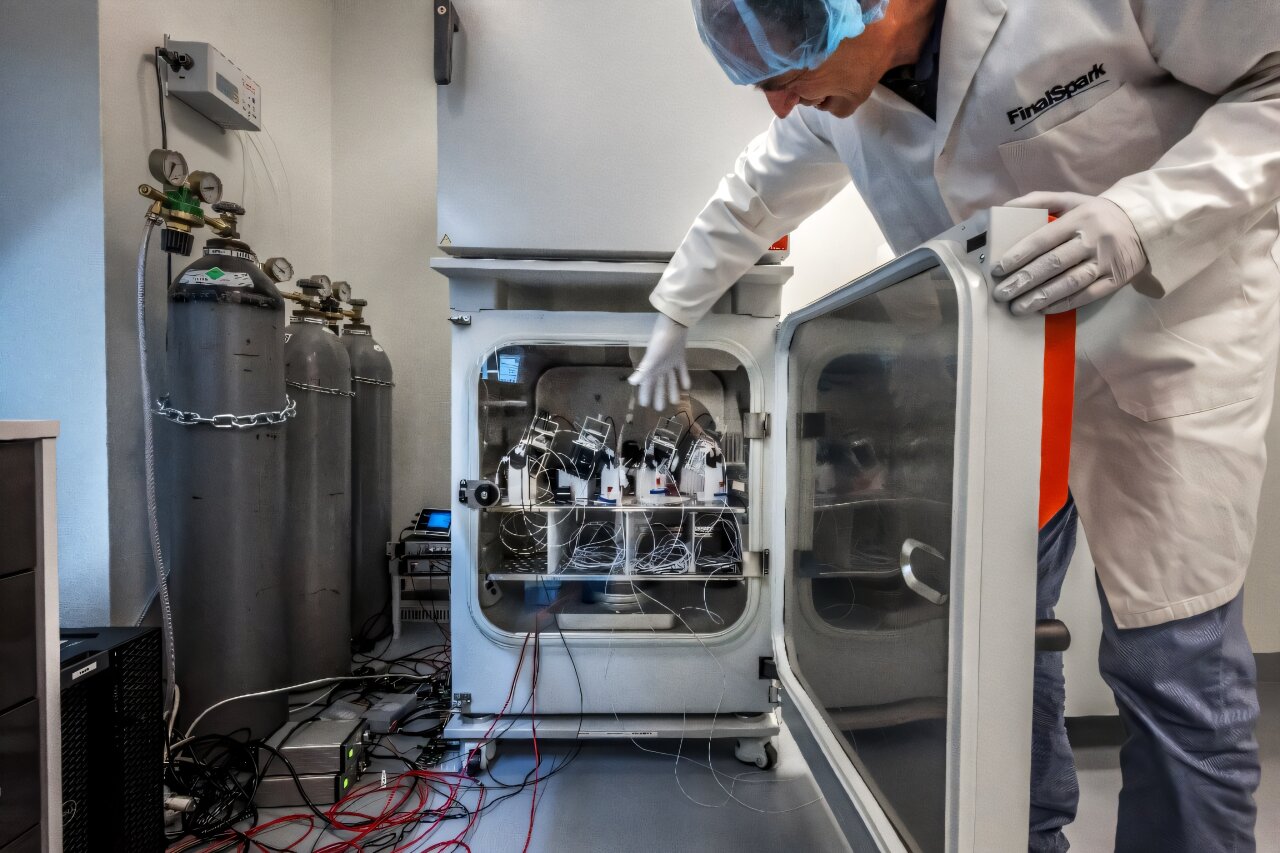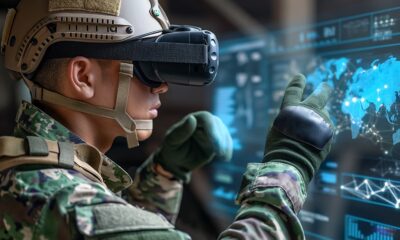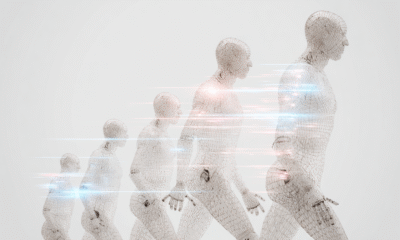Inovation
Brain Power: Harnessing Human Mini-Brains for Computer Technology

In a laboratory located in the charming Swiss town of Vevey, a scientist nurtures small clusters of human brain cells with a nutrient-rich solution to sustain their life.
Maintaining the health of these miniature brains is crucial as they function as basic computer processors, and once they perish, they cannot be resurrected, unlike a computer.
This emerging field of research, known as biocomputing or “wetware,” aims to leverage the finely tuned yet enigmatic computational power of the human brain.
During a visit to the laboratory of Swiss start-up FinalSpark, co-founder Fred Jordan expressed his belief to AFP that processors utilizing brain cells will eventually supplant the chips that currently power the artificial intelligence revolution.
Current supercomputers supporting AI technologies like ChatGPT employ silicon semiconductors to imitate the neurons and networks of the human brain.
“Instead of imitation, let’s utilize the real thing,” Jordan suggested.
One potential advantage of biocomputing is its ability to address the soaring energy requirements of AI, which have raised concerns about climate impact and prompted some tech giants to turn to nuclear energy.
“Biological neurons are one million times more energy-efficient than artificial neurons,” Jordan highlighted. Additionally, they can be perpetually reproduced in the laboratory, unlike the highly sought-after AI chips manufactured by companies such as Nvidia.

Despite this, the computational power of wetware is currently far from competing with the hardware that drives the modern world.
An intriguing question remains: could these miniature brains develop consciousness?
Brain Power
To create its “bioprocessors,” FinalSpark initially acquires stem cells, which originate from human skin cells donated by anonymous individuals and have the potential to transform into any cell type.
The company’s scientists then convert these stem cells into neurons, which are assembled into tiny groups called brain organoids, each roughly the size of a fruit fly larva’s brain, as mentioned by Jordan.
In the laboratory, electrodes are affixed to the organoids, enabling the scientists to monitor their internal interactions. The scientists can also stimulate the organoids with a minimal electric charge, with their subsequent response representing the binary code of traditional computing.

Ten universities worldwide are conducting experiments utilizing FinalSpark’s organoids, with the company’s website featuring a live feed of the neurons at work.
At the University of Bristol, researcher Benjamin Ward-Cherrier utilized one organoid as the brain of a basic robot capable of recognizing different braille letters.
However, numerous challenges exist, such as encoding data in a way comprehensible to the organoid and deciphering the output of the brain cells, Ward-Cherrier shared with AFP.
Compared to working with robots, the process is significantly more complex, Ward-Cherrier humorously remarked.
“Additionally, the fact that these are living cells—and thus subject to mortality—poses a challenge,” he added.
Indeed, Ward-Cherrier encountered a setback when the organoid died mid-experiment, necessitating a restart. FinalSpark states that the organoids typically survive for up to six months.
Meanwhile, at Johns Hopkins University, researcher Lena Smirnova employs similar organoids to investigate brain disorders like autism and Alzheimer’s disease, aiming to discover novel treatments.
While biocomputing currently appears futuristic compared to its more immediate biomedical research applications, Smirnova anticipates a significant transformation over the next two decades.

Do Organoids Dream of Electric Sheep?
All the scientists interviewed by AFP dismissed the notion that these cellular entities in petri dishes could potentially develop consciousness.
Jordan acknowledged the philosophical aspect of this debate, highlighting FinalSpark’s collaboration with ethicists.
He pointed out that the organoids, devoid of pain receptors, consist of approximately 10,000 neurons, a stark contrast to the human brain’s 100 billion neurons.
Despite significant advancements in neuroscience, including the understanding of brain functions, the creation of consciousness remains a profound mystery.
Ward-Cherrier hopes that beyond computational applications, biocomputing will unravel more about the intricate workings of the human brain.
Back in the lab, Jordan unveils a refrigerated chamber containing 16 brain organoids entwined with tubes.
Suddenly, activity spikes on the adjacent screen, indicating notable neural activity within the organoids.

The brain cells lack a discernible means of sensing the door opening, a mystery that has puzzled scientists for years.
“We are still grappling with understanding how they detect the door opening,” Jordan candidly admitted.
© 2025 AFP
Citation: ‘Wetware’: Scientists use human mini-brains to power computers (2025, October 17) retrieved 18 October 2025 from here
This document is subject to copyright. Apart from any fair dealing for the purpose of private study or research, no part may be reproduced without the written permission. The content is provided for information purposes only.
-

 Facebook4 days ago
Facebook4 days agoWarning: Facebook Creators Face Monetization Loss for Stealing and Reposting Videos
-

 Facebook4 days ago
Facebook4 days agoInstaDub: Meta’s AI Translation Tool for Instagram Videos
-

 Facebook4 days ago
Facebook4 days agoFacebook Compliance: ICE-tracking Page Removed After US Government Intervention
-

 Facebook5 days ago
Facebook5 days agoBreaking Updates: Meta Connect 2025 Unveils Latest Developments
-

 Video Games5 days ago
Video Games5 days agoGoku Takes on the Dragon Ball FighterZ Arena
-

 Cars4 days ago
Cars4 days agoRevving into the Future: Ferrari’s Plan to Unleash 20 New Models, Including Electric Vehicles, by 2030
-

 Video Games6 days ago
Video Games6 days agoTekken 8: Rise of the Shadows
-

 Amazon6 days ago
Amazon6 days agoNeil Young Takes a Stand: Pulling Music from Amazon in Protest of Jeff Bezos’ Support for Trump



























